Dogs help save the cheetah population from extinction? We had not considered the possibility until we visited the Cheetah Conservation Funds (CCF) facility near Otjiwarongo, our first destination after we picked up our rental car in Windhoek.
Otjiwarongo is a couple of hours drive north and lies at the junction of the roads from Windhoek and Etosha
. The CCF's facility itself lies further northeast and is accessible by a 40km stretch of unpaved road. We were shown around the facility by a young volunteer who shared a lot of information about the status of cheetah population in Namibia and the extraordinary work that is done by the CCF to save the cheetah from extinction.
Did you know that Namibia is the 'Cheetah Capital of the World'? In fact about 30% of all remaining cheetahs in the wild are within the boundaries of Namibia - it accounts for 3000 of the estimated total of 10,000 cheetahs remaining in Africa and Asia today.
There was a time when cheetahs were found all over Africa, but they are now endangered in most of their former ranges. As human populations grew, the amount of land devoted to livestock farming steadily increased encroaching on land where cheetahs roamed. The elimination of lions, leopards and other large predators from these commercial farmlands opened up a niche for cheetah to live on these Namibian farms, mostly feeding on its natural prey like antelopes and other small mammals
. Close to 95% of cheetahs live on commercial farmland, sharing the land with humans and livestock.
While this was not a huge problem in itself, In the 1980's Namibia was hit hard by drought. The cheetah's natural prey base died, or was killed by farmers to reduce grazing and watering pressures on their livestock. With little natural prey to hunt, cheetahs began to prey upon livestock. Farmers began to see cheetahs more frequently on their farms and thought their numbers had increased. The cheetahs took the blame for most predator related livestock losses. Farmers killed them by the thousands as pests or to sell their skins to the fur trade. The population halved in the 10-year period, leaving an estimated population of less than 2500 by the end of the 1980s.
It is natural to assume that protecting the cheetah would be easy enough by relocating them to game parks and nature reserves. What works for lions, leopards, rhinos etc
. should work for the cheetah too, wouldn't it ? Evidently not. We learned that cheetahs don't do well in game reserves as they don't compete well with hyaenas and lions. Instead it is the farmlands that offer the cheetah a safe haven.
In Namibia, cheetahs are a protected species. But when they come into conflict with humans and their livestock, farmers are allowed to kill the animal. Trapping and shooting cheetahs that are suspected of being a threat to livestock is permitted. Sometimes cheetahs are just passing through, but are labeled as a "problem animal". As a result protecting the species became a huge challenge and their numbers dwindled.
The Cheetah Conservation Fund was founded in 1990 to ensure that this endangered species did not go completely extinct. They do this by conducting scientific research in the area of cheetah genetics, biology, health and reproduction, creating and managing conservation strategies and education programs
. As part of their comprehensive conservation strategy they have formulated an innovative program to eliminate the need for ranchers to kill cheetahs. And this is where the Anatolian dogs come in.
The Anatolian Shepherd is a guard dog of ancient lineage; the breed evolved over time to be able to travel great distances across the arid Anatolian Plateau region of Turkey and was used to protect livestock against wolves and bears. CCF saw the potential these dogs could have in its efforts to minimize conflict with predators on Namibian farmlands and formulated the Livestock Guarding Dog program. As part of this program, a pup is raised together with the herd so that they bond with the livestock instead of humans and thus assume the role of protectors. The dog lives with the herd, eats and sleeps with the livestock and travels with them. It is always on alert and must defend its herd against a variety of threats including baboons, jackals, caracals, cheetahs, leopards and even humans
. The dog is not trained to chase or attack. Its job is to bark and posture to scare the predator away.
Occasionally the dog is forced to physically defend its herd, but its size and strength make it a formidable obstacle. Cheetahs are not normally aggressive, and are quick to retreat from a barking dog. So the dogs’ natural instincts to protect the flock, paired to the cheetah’s natural flight vs. fight instinct, made these dogs the ideal choice for keeping the threat at bay and eliminating the need to kill the cheetah.
CCF's program involves selective breeding of dogs, careful selection of recipient farmers, training for the new owner to train his/her dog for a successful guarding career, as well as follow-up to make sure the dog is doing well. Farmers see the benefits of this program and we understand this is making a real impact on the recovery of the cheetah population.
The CCF facility also provides shelter to cheetahs that have been captured alive or orphaned cubs. Depending on the circumstances and the age of the animal, some of them are reintroduced into the wild. We were able to visit an enclosures where a few of them (that are not suitable to be returned) were being cared for. Interestingly breeding cheetahs is not part of CCF's strategy. Hunting skills are typically learned early in life by watching the mother hunt and animals bred in captivity seem unable to sustain themselves successfully when released into the wild.
We rounded off the visit by visiting the excellent education center and museum on site dedicated to, what else, the cheetah.
Dogs Save Cheetahs!
Saturday, February 09, 2013
 Otjiwarongo, Otjiwarongo, Namibia
Otjiwarongo, Otjiwarongo, Namibia
Other Entries
-
135Across The Senegal River
Jan 1129 days prior Rosso, Mauritaniaphoto_camera11videocam 0comment 1
Rosso, Mauritaniaphoto_camera11videocam 0comment 1 -
136Sans GPS, Still Not Lost
Jan 1228 days prior Saint-Louis, Senegalphoto_camera15videocam 0comment 1
Saint-Louis, Senegalphoto_camera15videocam 0comment 1 -
137Barberie
Jan 1327 days prior Langue De Barbarie, Senegalphoto_camera17videocam 0comment 1
Langue De Barbarie, Senegalphoto_camera17videocam 0comment 1 -
138Westernmost Point Of Africa
Jan 1525 days prior Dakar, Senegalphoto_camera21videocam 0comment 3
Dakar, Senegalphoto_camera21videocam 0comment 3 -
139English Spoken Here!
Jan 1624 days prior Banjul, Gambiaphoto_camera15videocam 0comment 3
Banjul, Gambiaphoto_camera15videocam 0comment 3 -
140A Birder's Paradise
Jan 1921 days prior Tanji, Gambiaphoto_camera31videocam 0comment 3
Tanji, Gambiaphoto_camera31videocam 0comment 3 -
141Out of Western Africa and onto Southern Africa
Jan 2119 days prior Dakar, Senegalphoto_camera0videocam 0comment 4
Dakar, Senegalphoto_camera0videocam 0comment 4 -
142Lusaka
Jan 2515 days prior Lusaka, Zambiaphoto_camera11videocam 0comment 2
Lusaka, Zambiaphoto_camera11videocam 0comment 2 -
143The largest water curtain in the world, I presume?
Jan 2812 days prior Livingstone, Zambiaphoto_camera15videocam 0comment 1
Livingstone, Zambiaphoto_camera15videocam 0comment 1 -
144Same Falls, Different View
Jan 2911 days prior Victoria Falls, Zimbabwephoto_camera22videocam 0comment 1
Victoria Falls, Zimbabwephoto_camera22videocam 0comment 1 -
145A Day at Chobe National Park
Jan 3010 days prior Chobe National Park, Botswanaphoto_camera52videocam 0comment 2
Chobe National Park, Botswanaphoto_camera52videocam 0comment 2 -
146Zambezi River Cruise
Jan 319 days prior Victoria Falls, Zimbabwephoto_camera11videocam 0comment 0
Victoria Falls, Zimbabwephoto_camera11videocam 0comment 0 -
147Bulawayo
Feb 018 days prior Bulawayo, Zimbabwephoto_camera9videocam 0comment 2
Bulawayo, Zimbabwephoto_camera9videocam 0comment 2 -
148180 Degree Turn
Feb 036 days prior Maun, Botswanaphoto_camera7videocam 0comment 1
Maun, Botswanaphoto_camera7videocam 0comment 1 -
149Where A River Vanishes In The Kalahari
Feb 054 days prior Okavango Delta, Botswanaphoto_camera28videocam 0comment 7
Okavango Delta, Botswanaphoto_camera28videocam 0comment 7 -
150To Windhoek - By Hook Or Crook
Feb 072 days prior Windhoek, Namibiaphoto_camera3videocam 0comment 1
Windhoek, Namibiaphoto_camera3videocam 0comment 1 -
151Windhoek
Feb 081 day prior Windhoek, Namibiaphoto_camera11videocam 0comment 2
Windhoek, Namibiaphoto_camera11videocam 0comment 2 -
152Dogs Save Cheetahs!
Feb 09 Otjiwarongo, Namibiaphoto_camera7videocam 0comment 1
Otjiwarongo, Namibiaphoto_camera7videocam 0comment 1 -
153Etosha
Feb 112 days later Etosha National Park, Namibiaphoto_camera51videocam 0comment 2
Etosha National Park, Namibiaphoto_camera51videocam 0comment 2 -
154Through The Land of the Damara
Feb 134 days later Kamanjab, Namibiaphoto_camera23videocam 0comment 5
Kamanjab, Namibiaphoto_camera23videocam 0comment 5 -
155Dorob National Park
Feb 145 days later Hentiesbaai, Namibiaphoto_camera14videocam 0comment 1
Hentiesbaai, Namibiaphoto_camera14videocam 0comment 1 -
156How Many Is Too Many?
Feb 145 days later Cape Cross, Namibiaphoto_camera16videocam 0comment 1
Cape Cross, Namibiaphoto_camera16videocam 0comment 1 -
157Moonscape and Welwitschia
Feb 167 days later Swakopmund, Namibiaphoto_camera13videocam 0comment 1
Swakopmund, Namibiaphoto_camera13videocam 0comment 1 -
158Long-Legged Beauties
Feb 167 days later Walvis Bay, Namibiaphoto_camera10videocam 0comment 1
Walvis Bay, Namibiaphoto_camera10videocam 0comment 1 -
159Crossing the Tropic of Capricorn
Feb 178 days later Solitaire, Namibiaphoto_camera15videocam 0comment 2
Solitaire, Namibiaphoto_camera15videocam 0comment 2 -
160Flaming Dunes of the Namib Desert
Feb 189 days later Sossusvlei, Namibiaphoto_camera24videocam 0comment 1
Sossusvlei, Namibiaphoto_camera24videocam 0comment 1 -
161Namibia wrap-up
Feb 1910 days later Windhoek, Namibiaphoto_camera10videocam 0comment 0
Windhoek, Namibiaphoto_camera10videocam 0comment 0 -
162Revisiting Cape Town
Feb 2213 days later Cape Town, South Africaphoto_camera15videocam 0comment 1
Cape Town, South Africaphoto_camera15videocam 0comment 1 -
163Cape Peninsula
Feb 2314 days later Cape of Good Hope, South Africaphoto_camera18videocam 0comment 2
Cape of Good Hope, South Africaphoto_camera18videocam 0comment 2 -
164Swartberg Pass Loop
Feb 2718 days later Oudtshoorn, South Africaphoto_camera14videocam 0comment 2
Oudtshoorn, South Africaphoto_camera14videocam 0comment 2 -
165The Garden Route
Mar 0221 days later Knysna, South Africaphoto_camera18videocam 0comment 2
Knysna, South Africaphoto_camera18videocam 0comment 2 -
166Rocket Showers On The Wild Coast
Mar 0423 days later Bulungula, South Africaphoto_camera24videocam 0comment 1
Bulungula, South Africaphoto_camera24videocam 0comment 1 -
167Kingdom In The Sky
Mar 0625 days later Sani Pass, Lesothophoto_camera45videocam 0comment 1
Sani Pass, Lesothophoto_camera45videocam 0comment 1 -
168Footsteps Of The Bushmen
Mar 0726 days later Sani Pass, South Africaphoto_camera14videocam 0comment 1
Sani Pass, South Africaphoto_camera14videocam 0comment 1 -
169Fancy some Bunny Chow?
Mar 0928 days later Durban, South Africaphoto_camera13videocam 0comment 1
Durban, South Africaphoto_camera13videocam 0comment 1 -
170Trip Down Memory Lane
Mar 1130 days later Pretoria, South Africaphoto_camera13videocam 0comment 1
Pretoria, South Africaphoto_camera13videocam 0comment 1
Comments
2025-05-23
Comment code: Ask author if the code is blank

 Otjiwarongo, Otjiwarongo, Namibia
Otjiwarongo, Otjiwarongo, Namibia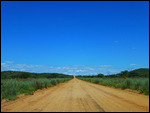
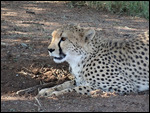
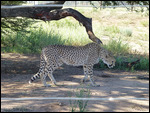
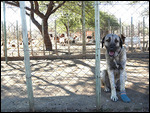
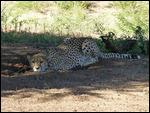









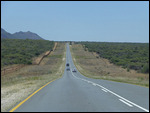
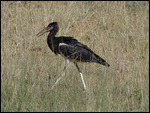
Ramesh
2013-03-12
What a brilliant idea to save the cheetahs. Hats off to those that conceived the plan and implemented it. Surely must be one of the most innovative conservation efforts anywhere in the world.